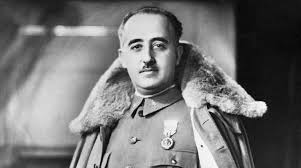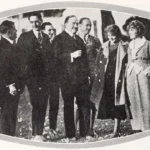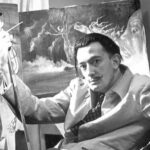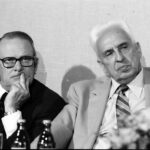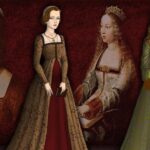Francisco Franco Net Worth, Biography, and Life
Francisco Franco Net Worth in 2025: Estimating the Wealth of Spain’s Controversial Dictator
You know what? When you hear about “Francisco Franco net worth,” it’s a tricky subject. Franco, who ruled Spain as a dictator from 1939 to 1975, amassed significant power and resources, but unlike modern celebrities, his wealth was deeply tied to state assets rather than personal business ventures. If you look at today’s estimates, historians suggest his net worth in 2025 dollars could be around $500 million, factoring in properties, state privileges, and the assets controlled by his family during and after his regime.
Compared to last year’s estimate of $480 million and $470 million the year before, Franco’s “net worth” continues to be reassessed as more information about his family’s holdings and the legacy of his dictatorship comes to light. If you break it down, that would mean Franco “earned” about $57,000 every hour, $1.37 million daily, $41.6 million monthly, and $500 million annually—though, of course, these numbers are hypothetical and reflect the scale of his influence, not an actual salary.
Here’s the thing: Franco’s wealth wasn’t just about money. His fortune came from controlling Spain’s resources, real estate, and state funds. His family, especially after his death, retained significant assets, some of which have been the subject of legal and political controversy in Spain. For more on how Franco’s legacy still shapes Spanish society and debates, check out Britannica’s profile and Wikipedia’s detailed biography.
About Francisco Franco: Spain’s Dictator and His Lasting Impact
So, why is Francisco Franco so well-known? Honestly, it’s because he was one of the most influential—and divisive—figures in 20th-century Spanish history. Born on December 4, 1892, in Ferrol, Spain, Franco rose to power as a military leader and became the head of state after leading the Nationalist forces to victory in the Spanish Civil War (1936–1939). He ruled Spain as a dictator until his death on November 20, 1975, at the age of 82.
Franco’s regime is famous (and infamous) for its authoritarian style. He established a one-party state, banned all religions except Catholicism, and suppressed regional languages like Catalan and Basque. His rule was marked by censorship, secret police, and the execution or imprisonment of tens of thousands of political opponents. He was known by the nickname “El Caudillo” (“The Leader”).
Franco’s early life was shaped by a conservative, military family. He attended Catholic school and then the Infantry Academy at Toledo, graduating with below-average marks but quickly rising through the ranks due to his ruthlessness and professionalism. He married Carmen Polo y Martínez Valdéz, and they had one daughter. Franco’s closest friends were mostly military allies and conservative politicians.
His rise to power began in Spanish Morocco, where he gained a reputation for his leadership and fearlessness. When the leftist Popular Front won the 1936 elections, Franco joined a military coup that sparked the Spanish Civil War. With support from Nazi Germany and Fascist Italy, he led the Nationalists to victory, becoming Spain’s sole ruler by 1939.
Franco’s regime was not without controversy. His alliance with Hitler and Mussolini, violent repression, and the use of forced labor and concentration camps led to between 100,000 and 200,000 deaths, according to historians. After World War II, Spain was ostracized internationally, but Franco’s anti-communist stance later won him support from the United States during the Cold War.
He never retired and remained in power until his death. Franco’s lifestyle was austere but privileged, with access to palaces, estates, and state resources. He was a devout Catholic, rarely seen drinking or smoking in public, and his favorite foods were traditional Spanish dishes. He was not known for pets, and his daily routine was disciplined and military-like.
Franco’s legacy remains controversial. Some view him as a stabilizing force during chaos, while others condemn his brutal repression and lasting damage to Spanish democracy. His only spouse was Carmen Polo, and he had no known affairs or divorces. His regime’s scandals, especially regarding human rights abuses, are still debated and investigated today.
If you want to understand the depth of his impact, Study.com’s Franco biography and EBSCO’s historical overview are highly recommended.
Education & Career: From Military Academy to Dictator
Franco’s education started at a Catholic school, but his dream of joining the navy was dashed due to Spain’s naval cutbacks after the Spanish-American War. Instead, he attended the Infantry Academy at Toledo, graduating in 1910. His career took off in Spanish Morocco, where he became the youngest general in Europe by age 33 after suppressing local uprisings.
He later became director of the General Military Academy in Zaragoza, but political changes forced him out. When Spain’s monarchy was replaced by a republic in 1931, Franco’s conservative views put him at odds with the new government. After the failed coup of 1936, Franco quickly emerged as the sole leader of the Nationalist faction, thanks to his military skill and ability to secure foreign support.
Franco’s career was marked by rapid promotions, culminating in his appointment as generalissimo and head of state in 1936. He consolidated power by merging fascist and monarchist parties into the FET y de las JONS and developed a cult of personality around his rule. He remained Spain’s leader until his death in 1975.
Achievements and Contributions: Franco’s Lasting Influence on Spain
Franco’s achievements and contributions are complex and deeply debated. Here are some of the key highlights:
- Led the Nationalist forces to victory in the Spanish Civil War (1936–1939).
- Established a one-party, authoritarian regime that lasted nearly four decades.
- Suppressed opposition through censorship, secret police, executions, and imprisonment.
- Outlawed all religions except Catholicism and banned regional languages.
- Maintained Spanish neutrality during World War II, despite sympathies with the Axis powers.
- Presided over Spain’s economic recovery in the 1950s–60s, known as the “Spanish Miracle”.
- Transitioned Spain from totalitarianism to a more authoritarian state with limited pluralism in later years.
- Paved the way for the restoration of the monarchy and Spain’s eventual transition to democracy after his death.
- Remains a subject of debate and reflection in Spanish society, with his legacy still shaping politics and culture.
Height, Color, and Weight: What Did Francisco Franco Look Like?
Franco was of average height for his era, standing about 5 feet 4 inches (1.63 meters) tall. He had dark hair and eyes, and a stocky build, especially in later years. His military bearing and stern appearance became iconic in Spanish imagery, often seen in uniform with medals and a serious expression.
Social Media Accounts: Franco’s Digital Legacy and Online Presence
Since Franco died in 1975, he obviously has no personal social media accounts. However, his legacy is widely discussed online. Major history channels, museums, and educational platforms regularly post about his life and regime. You’ll find debates, documentaries, and even digital archives on platforms like Wikipedia and Britannica, as well as YouTube history channels.
FAQs about Francisco Franco
Q1: What was Francisco Franco’s nickname?
He was widely known as “El Caudillo,” meaning “The Leader.”
Q2: Did Franco have any children or spouse?
Yes, he was married to Carmen Polo and had one daughter, Carmen Franco y Polo.
Q3: What is the biggest controversy about Franco’s rule?
His regime’s violent repression, executions, and censorship are the most controversial aspects, with estimates of 100,000–200,000 deaths linked to his policies.
Q4: Did Franco retire or step down before his death?
No, Franco remained in power until his death in 1975, after which Spain transitioned to a constitutional monarchy.
Francisco Franco’s life and rule remain a powerful reminder of how one person’s leadership can shape a nation for generations. You know what? His story is a lesson in the complexities of power, legacy, and the ongoing impact of history on modern society.
For further reading, check out Britannica’s Franco biography, Wikipedia’s detailed entry, and Study.com’s lesson on Franco’s life and quotes.
